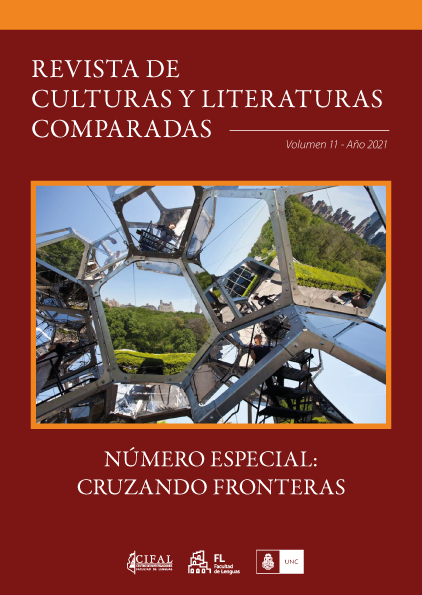El español de los EUA como fruto de la hibridación: nuevos dilemas en traducción
Keywords:
migrations, hybridity, translationAbstract
In the last 30 years, it can be observed an intense migratory phenomenon of the Spanish-speaking population from Mexico and the Caribbean into the USA, which is evident in the culture and the languages of both communities in contact, and which has brought about the growth of the population of Hispanic origin in the USA. In this context in which hybridity is a reality whose present seems to persist in frontiers that get blurred, but which are also preserved at the same time, we will explore those aspects related to translation within the context of hybridity and the role of the translator as an intermediary committed to both languages, in the light of the emergent linguistic policies of recent decades. It is relevant to notice that the written Spanish variant used in the USA to inform and communicate is to a very large extent a mere product of translation. Given the growing number of Spanish-speaking individuals and, consequently, the exponential increase in the use of Spanish, we find a singular scenario where translation studies, which lack theoretical and empirical research, just focus on the reality of a language that evolves within a bilingual society like the USA at present. We gather that translation as a discipline that tensely operates between the borders of these two cultures must respond with relevant criteria and strategies to the communicative needs of those who inhabit those spaces.
Downloads
References
Betti, Silvia (2017). “Una cuestión de identidad…español y Espanglish en los Estados Unidos”. Camino Real: estudios de las hispanidades norteamericanas 11 (2016): 61-76.
García Canclini, Néstor. Culturas Híbridas. Estrategias para entrar y salir de la modernidad. México: Grijalbo, 1989.
Gómez Font, Alberto. “El español desplazará al inglés como idioma más hablado en EE. UU.”. FUNDEU 2006: s. p. Web.
Lapuerta, Paloma. “El espanglish y la identidad latina en Estados Unidos”. Actas XVI Congreso AIH 2 (2010). Web.
Libedinsky, Juana (2003). “Es el spanglish un idioma: el nacimiento de una lengua”. La Nación [Buenos Aires, Argentina] 29 de junio de 2003: s. p. Web.
Molinero, Leticia. “El español de los Estados Unidos, un nuevo punto de partida”. Academia Norteamericana de la Lengua Española, 2011.
Ramos, Zuainia (2012). “Estadounidismos: la evolución del español en Estados Unidos”. Huffpost [Estados Unidos] 16 de octubre de 2012: s. p. Web.
Schmidt, Bettina E. (2002-2003). “Teorías culturales posmodernas de Latinoamérica (y su importancia para la etnología)”. Indiana 19/20 (2003): 13-15.
Triantafilian Nginios, Rosa. “Sobre el spanglish en los Estados Unidos”. Tinkuy: Boletín de investigación y debate 15 (2011): 118-126.
Valdés, Guadalupe. M. (2014). “Bilingües y bilingüismo en los Estados Unidos: la política lingüística en una época antiinmigrante”. Alteridades 5/10 (1995): 25-42.
Bueno, Raúl. “Sobre la heterogeneidad literaria y cultural de América Latina”. Asedios a la heterogeneidad cultural (1996): 21-36.
Published
How to Cite
Issue
Section
License

This work is licensed under a Creative Commons Attribution-NonCommercial-NoDerivatives 4.0 International License.
Aquellos/as autores/as que tengan publicaciones con esta revista, aceptan los términos siguientes:
a) Los/as autores/as conservarán sus derechos de autor y garantizarán a la revista el derecho de primera publicación de su obra, el cual estará simultáneamente sujeto a la Licencia de reconocimiento de Creative Commons.
b) La cesión de derechos no exclusivos implica que la publicación de los artículos en la presente revista no quita la posibilidad o el derecho al autor/a de publicar su obra de manera posterior en otras revistas u órganos editoriales y la autorización por parte de los/as autores/as para que el trabajo sea depositado en los repositorios institucionales, tales como el Portal de Revistas de la Universidad Nacional de Córdoba.



